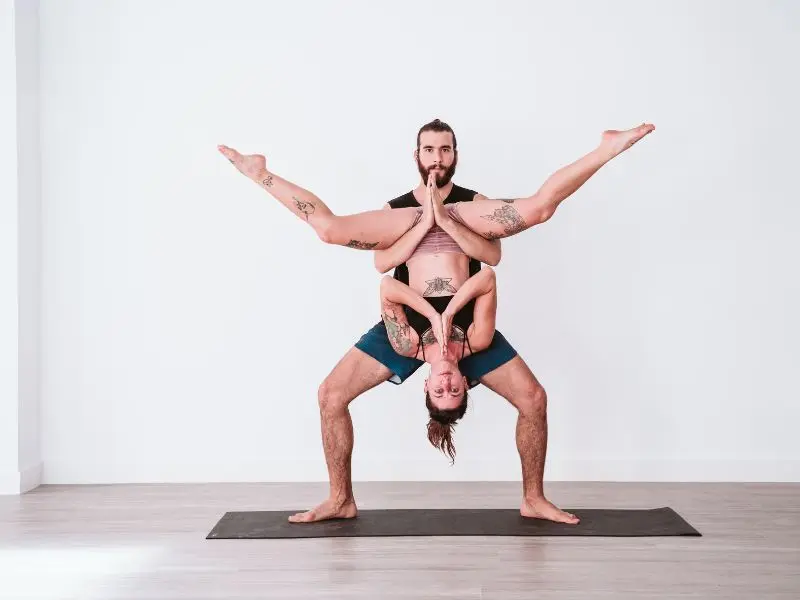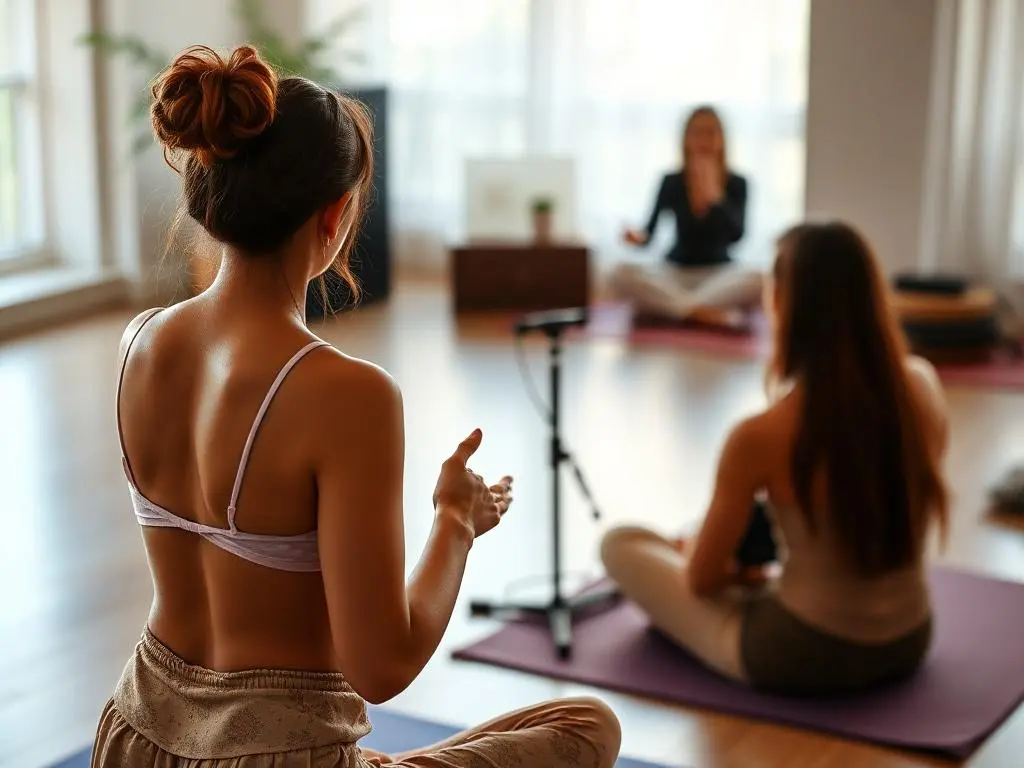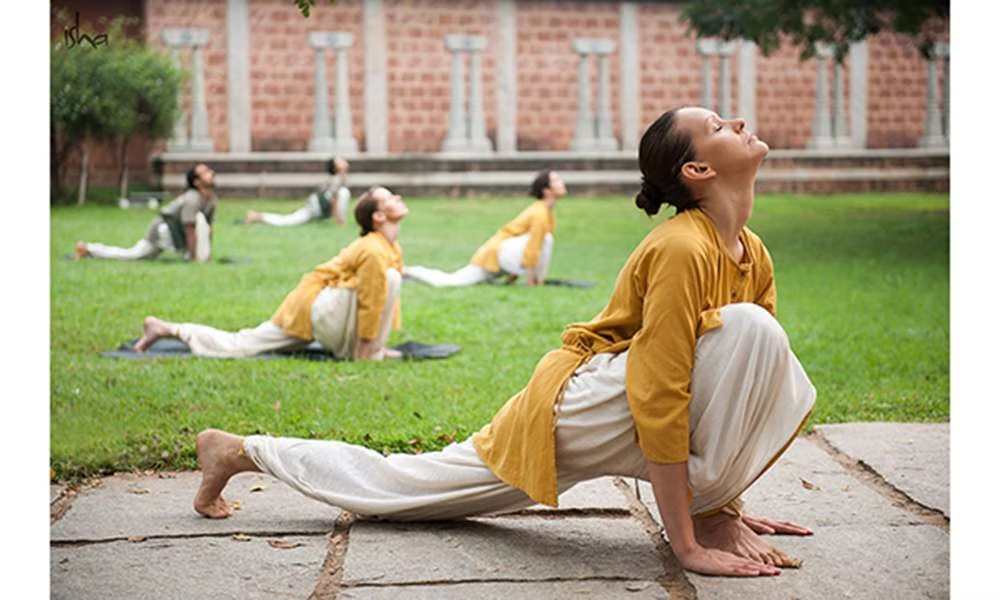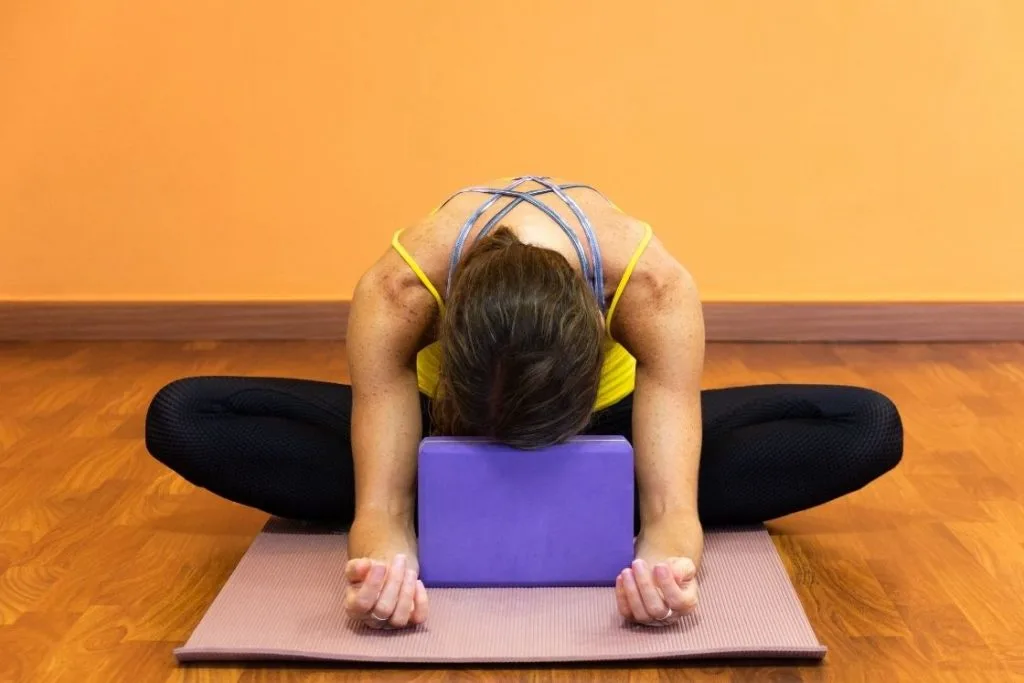Vinyasa in Yoga (Definition, Use, History & Tips)
Vinyasa is one of the most common styles of yoga practiced in the West. Vinyasa is a term used to describe continuous or dynamic movements between yoga poses. This flow of movement is excellent for getting your heart rate going and working up a sweat. Vinyasa can also help increase flexibility, strength, stability, calmness, and focus. Even if you do not wish to practice vinyasa yoga, the use and applications of this term are essential to understand as a dedicated practitioner of yoga.
What does vinyasa mean?
The synchronizing of physical movement with your breath in hatha yoga is called vinyasa. This technique allows you to create a deeper absorption of awareness through a rhythmic moving meditation while practicing yoga.
Viewing ads supports YogaBasics. Remove ads with a membership. Thanks!
To better understand the Sanskrit word vinyasa, we need to break it down into two parts. The prefix vi can be translated as “in a special way.” The suffix nyasa can be translated as “to place,” or ‘within prescribed parameters.’” Thus vinyasa can be translated as “arranging something in a special way within specific structures.” In hatha yoga, these structures are the inhalations and exhalations of the breath. The special placements are the sequences of individual yoga poses. The classic vinyasa sequence in hatha yoga is the sun salutations. Variations of the sun salutation sequence form the foundation for vinyasa yoga classes.
Vinyasa is used in yoga to denote any of the following:
- Linking a movement to an inhale or exhale of breath;
- A yoga sequence where each movement is linked with the breath;
- A yoga class or style that primarily focuses on a continuous movement with the breath; or
- Setting an intention or goal and taking deliberate and linked steps towards achieving it.
Using vinyasa in asana
Vinyasa supports moving into and out of the yoga poses through connection with muscular breathing mechanisms. An inhalation naturally expands the belly and ribs and, with proper alignment, will lengthen the spine and encourage expansion. An exhalation naturally contracts the abdomen and torso and encourages retraction. In general, you inhale when you move into a pose, move against gravity, create upward movements, or arch the spine. You exhale as you move out of a posture, move with gravity, create downward movements, or round the spine.
Vinyasa is best used in warmups and during sun salutation sequences. Some styles of yoga use vinyasa through the entire practice, which can often sacrifice proper alignment in favor of moving quickly and fluidly through poses. However, the repetition of poses and movement with the breath does build familiarity, create mastery, build strength, and increase body heat.
Using vinyasa with pranayama
Vinyasa movements are best supported by the ocean sounding breath or Ujjayi Pranayama. This breathing technique slows the breath rate down, increases mental focus, and helps to warm and energize the body. During a Vinyasa class, it is very important to pay close attention to the quality of your breathing. When you feel your breath becomes short, rough, or constrained, it is a signal to slow down and take a break.
What does “take a vinyasa” mean?
The phrase “take a vinyasa” or “move through a vinyasa” is a common cue used by yoga instructors in classes. This cue refers to moving through a specific sequence of poses. To do or take a vinyasa is to move through four poses while linking them with your breath:
- Inhale to Plank pose
- Exhale to Chaturanga or Knees Chest Chin pose
- Inhale to Upward-Facing Dog or Cobra pose
- Exhale to Downward-Facing Dog
The “take a vinyasa” cue is usually optional and commonly used throughout a class to maintain a state of flow and to continue to build heat, intensity, and energy. This sequence requires core and upper body strength to safely move through these poses. If you are feeling tired, overwhelmed, or overheated, you are encouraged to opt-out of one or all of these vinyasas and instead move into to Downward Dog or Child’s Pose.
Below is a good tutorial on how to take a vinyasa and how beginner students can modify the sequence:
Styles of vinyasa yoga
Ashtanga was the original style of vinyasa yoga. The newer styles that are considered a type of vinyasa yoga include Baptiste Yoga, Jivamukti, Power Yoga, Viniyoga, and Flow Yoga. Vinyasa yoga can be practiced at any level, but it is usually best suited for those with experience in yoga. The tempo and temperature of a vinyasa class can vary due to the specific style and teacher.
History of Vinyasa Yoga
These newer styles of vinyasa yoga are a less structured offshoot of the Ashtanga Yoga system. Ashtanga Yoga has a strict structure and precise set of rules and was developed in by Sri K. Pattabhi Jois. His teacher, Krishnamacharya, is attributed with being the originator of the Vinyasa concept in yoga. Krishnamacharya’s yoga style was constantly changing as he was a master of adapting yoga to the personality of his students. The yoga Jois learned from Krishnamacharya became his way of teaching all of his students, and he named this style Ashtanga Yoga.
Krishnamacharya used the term vinyasa in a couple of different ways. One was in the general sense of creating an intelligent sequence of steps for approaching a specified yoga pose. Another way he used vinyasa was describing the stage or variation of a pose from a beginner to an advanced mode of execution. Pattabhi Jois used vinyasa in a more specific way to mean the repetitious linking movements between the asanas in a set sequence.
Benefits of Vinyasa Yoga
Vinyasa Yoga is a challenging, strengthening, sweaty, and invigorating practice. The fast-paced flow of asanas builds heat, which helps to detoxify the body, increase bone density, improve cardiovascular health, and boost metabolism. The continual focus on breathing while flowing through the poses boosts respiratory health, calms the mind, and increases focus and concentration.
Vinyasa tips for beginners
At first, the synchronizing of movement with your breath in vinyasa can be a bit challenging and discombobulating. However, once you get the hang of it and establish a rhythm that works for your body, vinyasa can ultimately deepen your focus and awareness. If you are struggling with your breath, know that it is okay to add extra breaths or to slow down and skip some movements to keep up with the flow of the class. Allow yourself to drop into the rhythm and flow of the practice rather than get caught up on specific poses or details.
Always remember not to sacrifice proper alignment to quickly move through a sequence. If your alignment awareness is off, supplement with slower and more alignment focused yoga classes.






